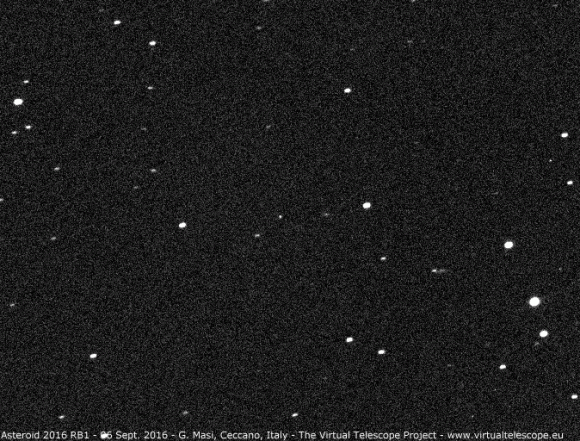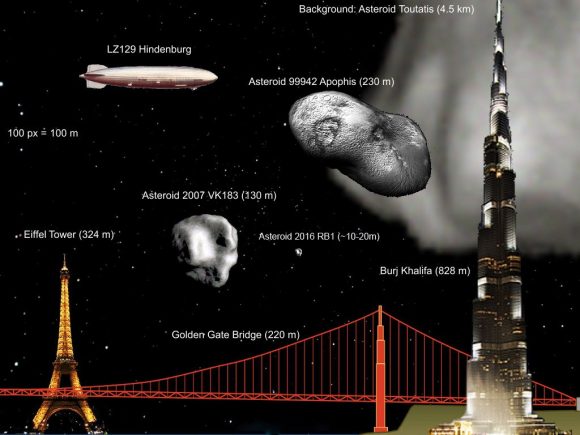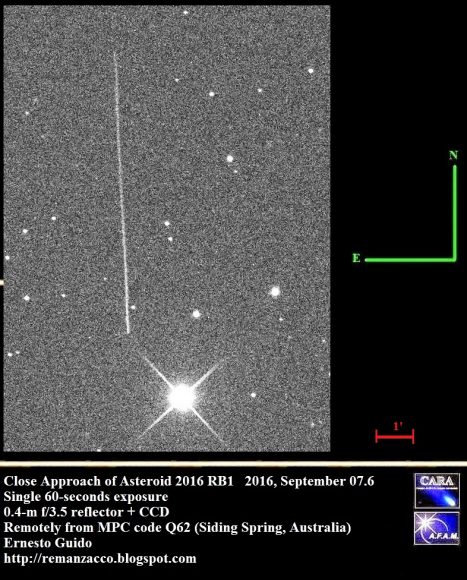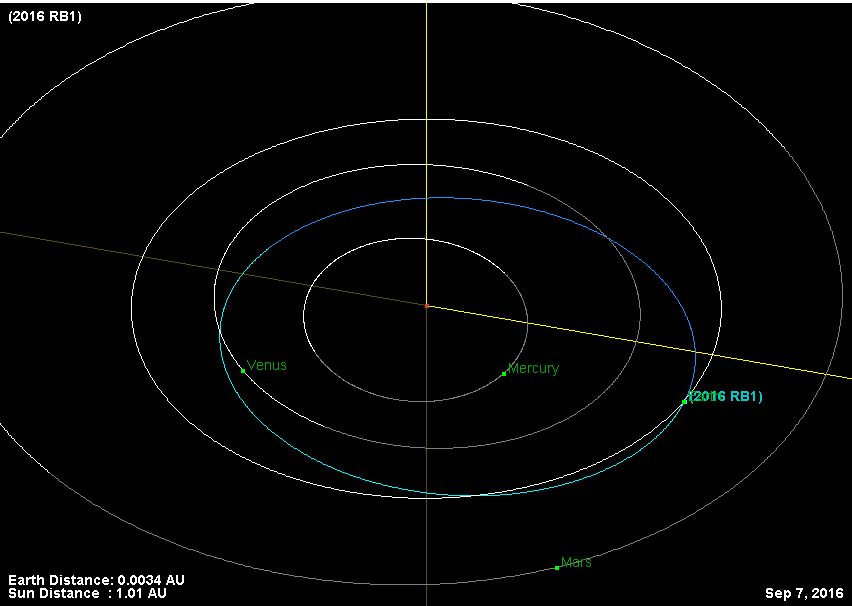As NASA prepares to send a spacecraft to a distant asteroid, another space rock made a surprise visit to Earth’s vicinity. The newly discovered small asteroid, named 2016 RB1, passed safely by Earth, coming within approximately 23,900 miles (38,463 km) of our planet, or just outside the orbit of many communications satellites.
The asteroid passed by Earth at 1:28 p.m. Eastern Time (1728 UT).

Click on the image if it is not animating in your browser.
The asteroid was discovered on Monday, September 5 by the Mt. Lemmon Survey telescope in Tucson, Arizona. 2016 RB1 is estimated to be between 24 to 52 feet (7.3 – 16 meters) across, which is just a bit smaller than the Chelyabinsk meteor that exploded over northern Russian in February 2013, which was estimated to be around 56 ft (17 meters) wide.
On Thursday, September 8, NASA hopes to launch its OSIRIS-ReX mission to study asteroid Bennu and conduct a sample return, with the sample coming back to Earth by 2023. With the mission, scientists hope to learn more about the formation and evolution asteroids and of the Solar System as a whole.
Here’s a graphic comparing the small asteroid 2016 RB1 to other objects, compiled by Mikko Tuomela and Massimo Orgiazzi.

A few observers were able to track the asteroid, including Gianluac Masi of the Virtual Telescope project, and Ernesto Guido of the Remanzacco Observatory.

2016 RB1 is the third asteroid so far in September 2016 that traveled between the Earth and the Moon. Asteroid 2016 RR1 passed by at 0.32 lunar distances on September 2, and just a few hours later, asteroid 2016 RS1 passed by at 0.48 times the Earth-moon distance. But this latest asteroid pass is the closest, at 0.10 lunar distances.
From its orbit, astronomers have determined 2016 RB1 is likely an Aten asteroid, a group of Near-Earth Objects that cross the orbits of Earth, Venus and even Mercury.
Sources and further reading: Remanzacco Observatory
Virtual Telescope Project
JPL’s Small Body Database
Earth-Sky.org
Ian O’Neill at Discovery Space News/Seeker


it always reminds me about how little notice we will receive, under certain circumstances, that a potentially dangerous medium-small asteroid is about to hit us; maybe five or ten times larger than this one.
I totally agree. “EARTH DESTROYED BY UNDETECTED METEOR” News at 11.
While size of the asteroid has something to do with how dangerous one can cause, we also have to worry about density too. Be nice if somebody can tell us the density to some of these smaller asteroids.
This is just one more reminder that we should be more pro-acitve in advancing our detection of these smaller asteroids and developing a system to deflect them. In my book ORBITAL MANEUVERS, the US is hit by a large asteroid and strands a space shuttle in orbit. This was a cataclysmic event, but these smaller asteroids have the ability to destroy a city and kill millions of people. Chelyabinsk in 2013 would have been a very different story if it detonated a 1000 feet above any one of the cities it passed over instead of at 30 km!
For more information on asteroids and the novel mentioned above, check out http://www.orbitalmaneuvers.com